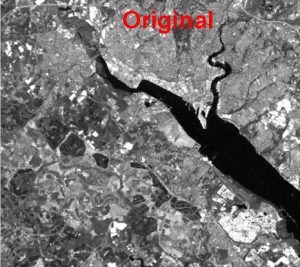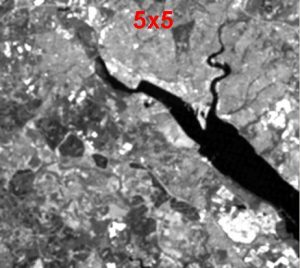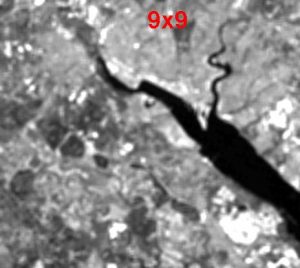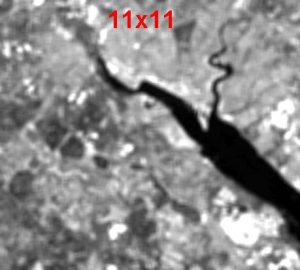Recent Comments
Archives
Categories
- No categories
Meta
8.3. Low Pass Filters
Objectives
The objectives of this section are:
- to understand the different types of spatial variation in pixel values within a digital image
- to understand the purpose and operation of low pass filtering in digital image processing
Components of spatial variation and digital filters
Several types of variation are present in a remotely sensed image:
- regional variation (low frequency patterns) that describe the spectral characteristics of broad areas within an image
- local variation (high frequency patterns) that describe how spectral properties vary relative to their immediate surroundings
- noise, which is a random component in almost all images that shows no spatial pattern
For geographical or geological analysis, it is always helpful to separate the regional and local spatial components. The different components can be extracted using a digital filter in the same way as a physical filter would separate out suspended solids from a liquid, for example. There are two types of digital filter:
- low-pass filters separate out the slowly varying component in an image from the remainder of the information present (in other words, they enhance low frequency, regional patterns)
- high-pass filters separate out the rapidly varying component in an image from the remainder of the information present (in other words, they enhance high frequency, local patterns)
In the material that follows, we will look at how low-pass filters work.
Low-pass filters
As shown in the animation below, one commonly used example of a low-pass filter is a moving average filter.
N/B: The slides below will not show on the webpage, but you can save/keep them on your computer and view them using the Adobe Flash Player 32 you downloaded earlier
As shown in the sequence of images below, the kernel size used in a filter can be increased. Instead of covering each pixel and the 8 immediately surrounding pixels (a 3 by 3 filter), the kernel size can be increased to cover each pixel and the 24 nearest surrounding pixels (a 5 by 5 filter), or extend to cover even more neighbouring pixels (e.g. 7 by 7 filters and higher). Since a low-pass filter calculates local average values for kernel pixels, it smooths away local variation and is therefore also known as a smoothing filter. Low-pass filters ‘blur’ the features in an image and as a result there is a loss in spatial resolution. As can be seen from the sequence of images below, the amount of blurring is directly proportional to the kernel size. Such filters are useful for suppressing noise in an image or removing banding caused by sensor degradation in LandSat data.
Aside from the mean filter, there are other types of low-pass filter such as the median filter and adaptive filter.






References
Lavreau, J. (1991) Dehazing Landsat Thematic Mapper images, Photogrammetric Engineering and Remote Sensing, 57, 1297-1302.